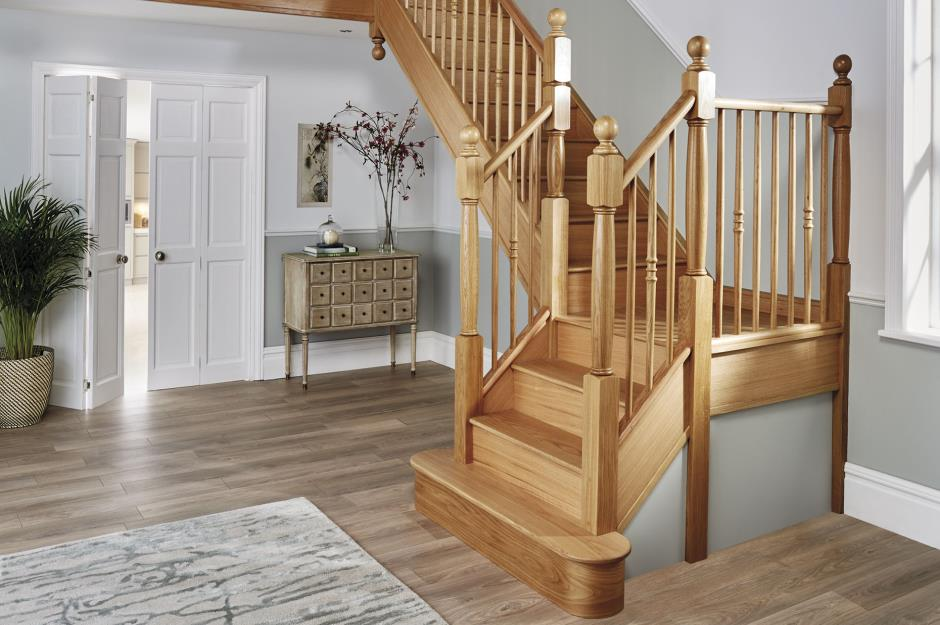The combination of hardwood floors and stairs is a classic and timeless choice in home design. While traditionally, color uniformity has been the norm, an emerging trend is to embrace contrast by opting for hardwood floors of different colors than the stairs. This design approach not only adds a touch of creativity but also allows homeowners to showcase their style. In this article, we’ll explore the reasons behind choosing hardwood floors and stairs of different colors, the design considerations involved, and the impact this choice can have on the overall aesthetic of a home.
Creating Visual Interest:
One of the primary reasons for choosing hardwood floors of different colors than stairs is to create visual interest within the space. Contrast in color draws the eye and adds an element of dynamism to the design. This intentional departure from a monochromatic scheme can serve as a focal point, making the staircase a standout feature in the home.
Enhancing Architectural Features:
The contrast between hardwood floors and stairs can be used strategically to highlight architectural features. For example, a staircase with a different color may draw attention to its unique design, intricate balustrades, or handcrafted details. This approach allows homeowners to celebrate and showcase the craftsmanship of the staircase.
Defining Separate Spaces:
Using different colors for hardwood floors and stairs helps define separate areas within the home. This is particularly effective in open-concept spaces where delineating different functional zones can contribute to a sense of organization and purpose. The transition between spaces becomes more pronounced, providing a subtle visual cue for occupants and guests.
Playing with Tonal Variations:
Hardwood comes in a wide range of tones and shades. Choosing a different color for the stairs allows homeowners to play with tonal variations, creating a nuanced and layered look. This can be especially effective when incorporating a complementary or contrasting color palette, adding depth and sophistication to the overall design.
Showcasing Staircase as Art:
A staircase with a different color than the surrounding hardwood floors can be treated as a piece of art. By intentionally selecting a contrasting or complementary color, homeowners can turn the staircase into a focal point, transforming it from a functional element to a visually striking feature that adds character and personality to the home.
Personalizing the Space:
Designing with hardwood floors and stairs of different colors allows for a high degree of personalization. Homeowners can express their style and preferences by selecting colors that resonate with them. Whether opting for a bold contrast or a subtle variation, this approach turns the home into a canvas for self-expression.
Adapting to Changing Trends:
Home design trends are constantly evolving, and the choice of hardwood floors and stairs of different colors allows homeowners to stay current with the latest styles. This flexibility makes it easier to update the aesthetic of a home without undertaking a complete renovation, providing a cost-effective way to keep the design fresh and modern.
Creating a Timeless Look:
While embracing contrast is a contemporary design trend, it also has timeless appeal. Well-executed contrast can create a look that withstands changing fashions and remains relevant over the years. This timelessness ensures that the investment in a unique color scheme for hardwood floors and stairs pays off in the long run.
Optimizing Natural Light:
The choice of different colors for hardwood floors and stairs can impact the perception of natural light within a home. Light-colored stairs can reflect light and create a sense of openness, while darker floors can anchor the space and add a cozy ambiance. This consideration allows homeowners to optimize the use of natural light based on their preferences.
Professional Guidance in Design:
Designing with hardwood floors and stairs of different colors requires a thoughtful approach to ensure a harmonious result. Seeking professional guidance from interior designers or color experts can be valuable in achieving the desired aesthetic. Professionals can provide insights on color combinations, finishes, and overall design cohesion.
Conclusion:
Opting for hardwood floors and stairs of different colors introduces a layer of creativity and personalization to home design. This approach goes beyond the conventional, allowing homeowners to showcase their individuality and create a space that is both visually intriguing and timeless. Whether aiming for a bold statement or a subtle contrast, the interplay between hardwood floors and stairs offers a dynamic canvas for design exploration within the home.

